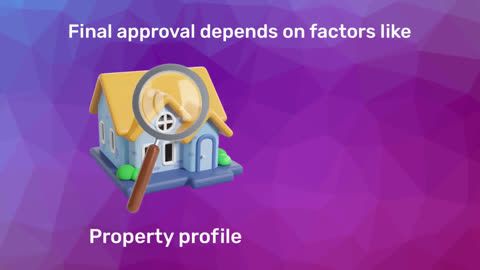In this comprehensive guide, we’ll dive into what a leave and license agreement is, why stamp duty matters, how it is calculated, and what you need to know to complete your agreement smoothly.
What is a leave and license agreement?
A leave and license agreement is a legal document that grants the licensee (tenant) the right to occupy the property for a specific period. Unlike a lease agreement, it does not transfer any interest in the property to the tenant. This type of arrangement is particularly popular in India for residential and commercial rentals.The agreement outlines details such as the duration of the license, the license fee (rent), security deposit, and the terms and conditions under which the property is to be used. The document also includes clauses related to the termination of the agreement and the responsibilities of both parties.
Why is stamp duty important for a leave and license agreement?
Stamp duty is a tax levied by the government on legal documents, including leave and license agreements. Without paying the appropriate leave and license agreement stamp duty, the agreement is not considered legally valid. Stamp duty acts as proof that the document is registered with the government and is enforceable in a court of law.For landlords and tenants, non-payment or underpayment of stamp duty can lead to hefty fines, penalties, and legal complications. Therefore, ensuring the correct payment is crucial for the protection of both parties’ rights.
How is leave and license agreement stamp duty calculated?
The leave and license agreement stamp duty is calculated based on factors such as the duration of the agreement, the monthly rent, and the security deposit. In most states, stamp duty is calculated as a percentage of the total rent payable over the agreement’s tenure. Here’s a general breakdown:1. Monthly rent: The primary factor influencing stamp duty is the monthly rent agreed upon in the agreement.
2. Security deposit: Some states consider the security deposit as part of the calculation. Typically, a small percentage of the deposit is added to the stamp duty amount.
3. Tenure of the agreement: The longer the duration of the agreement, the higher the stamp duty. Shorter agreements attract less stamp duty compared to long-term arrangements.
Each state has its own rates and methods for calculating stamp duty. For example, in Maharashtra, stamp duty is calculated at 0.25% of the total rent and deposit for the term of the agreement. In Delhi, the rate is slightly different, with a fixed percentage applied depending on the rent and duration.
How to pay stamp duty for a leave and license agreement?
Paying stamp duty is straightforward and can be done either online or offline. Here’s a step-by-step process:1. Online payment: Most states offer an online portal for stamp duty payment. You can visit the official website, fill in the necessary details, and make the payment through net banking, debit card, or credit card. Upon payment, a receipt is generated, which you should attach to the leave and license agreement.
2. Offline payment: You can also make payments at designated banks or government offices. After payment, a stamp or endorsement is affixed to your agreement, confirming that the duty has been paid.
3. E-stamping: In some states, e-stamping is available, where a digital certificate is issued instead of a physical stamp. This certificate serves as proof of payment and is attached to the agreement.
Common mistakes to avoid in leave and license agreement stamp duty
When preparing a leave and license agreement, it’s important to be aware of common pitfalls that could lead to issues later:1. Underpayment of stamp duty: Calculating stamp duty incorrectly or underpaying it can result in penalties. Always check the latest rates specific to your state.
2. Ignoring state-specific rules: Stamp duty rates and registration requirements vary from state to state. Make sure you’re following the regulations specific to where the property is located.
3. Not registering the agreement: Even after paying stamp duty, it’s essential to register the agreement with the local sub-registrar. An unregistered agreement may not hold up in legal disputes.
4. Misinterpretation of tenure: When calculating stamp duty, be clear on the tenure. If the agreement is for an extended period, ensure the duty reflects the cumulative rent for the entire term.
Why accurate stamp duty payment matters
Paying the correct leave and license agreement stamp duty ensures that the document is legally enforceable and avoids future disputes. In the absence of proper stamp duty payment, the agreement may be considered invalid, leading to complications in cases of non-payment of rent, eviction, or breach of terms.For landlords, especially those who rely on rental income to repay their home loans, having a valid and enforceable agreement is crucial. It helps ensure a steady income stream and legal recourse if any issues arise with tenants.
Explore Bajaj Housing Finance Home Loan
If you are planning to invest in rental property or expand your real estate portfolio, a home loan is often the first step. Bajaj Housing Finance Home Loan offers competitive interest rates, quick approvals, and flexible repayment options, making it easier for property investors to acquire the right assets. Whether you're a first-time buyer or looking to refinance an existing property, a well-structured home loan can support your investment goals.Here are a few reasons why you should choose Bajaj Housing Finance Home Loan:
1. Competitive interest rates: Bajaj Housing Finance offers some of the most competitive home loan interest rates in the market, ensuring that your home loan remains affordable throughout its tenure.
2. Flexible repayment options: With flexible repayment options, borrowers can choose a plan that best fits their financial situation, making it easier to manage monthly payments.
3. Quick and easy processing: The application process for a Bajaj Housing Finance Home Loan is streamlined and user-friendly, ensuring quick approval and disbursement.
Explore Bajaj Housing Finance Home Loan today and experience a seamless way to finance your dream home.




